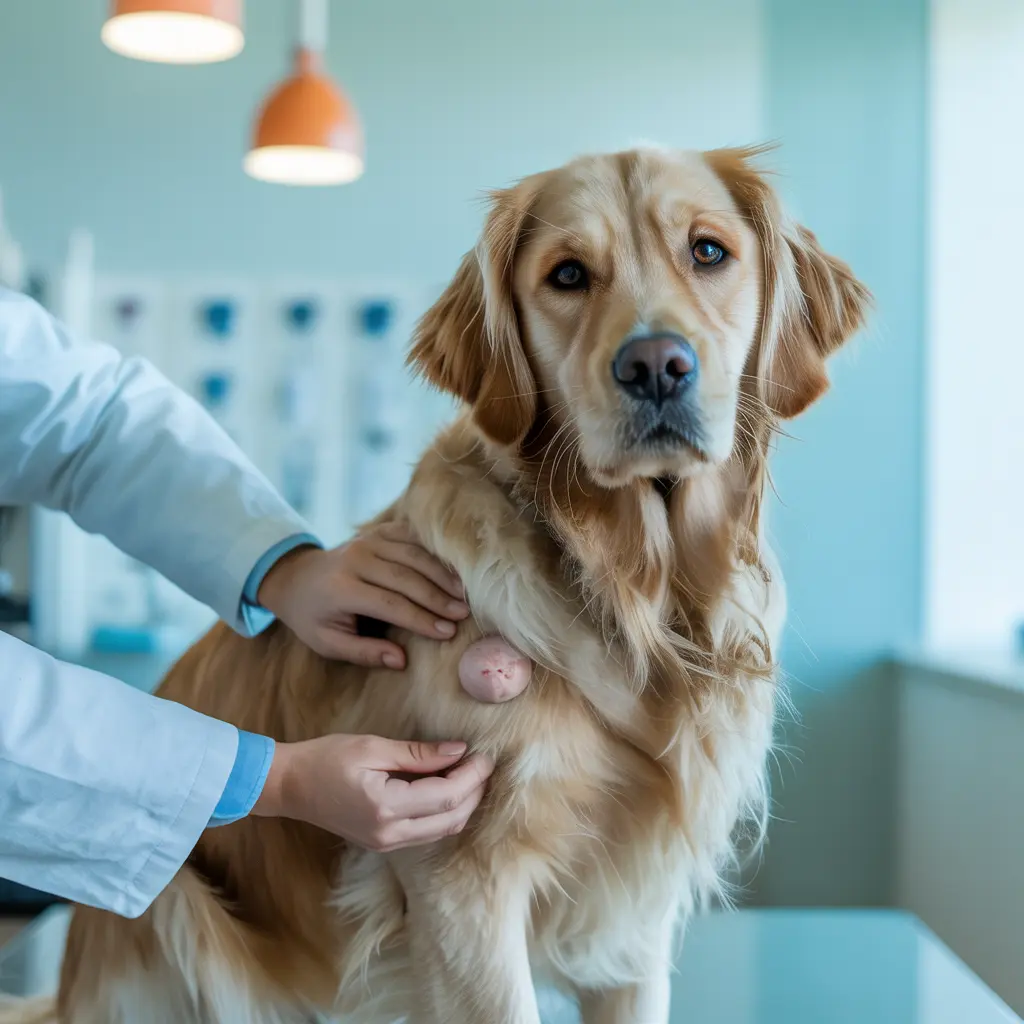As a dog owner, noticing a strange lump or growth on your pet’s skin can be concerning. One common culprit is a skin papilloma, also known as a canine wart. While these growths are often harmless, they can sometimes cause discomfort, spread to other dogs, or signal an underlying issue.
In this guide, we’ll explain what dog skin papillomas are, what causes them, how to treat them, and when to seek veterinary advice.
What Is a Dog Skin Papilloma?
A papilloma is a small, benign growth caused by the canine papillomavirus (CPV). They are most commonly seen in young dogs, senior dogs, or those with weaker immune systems.
Papillomas often look like:
- Small, cauliflower-shaped lumps
- Rough or bumpy growths on the skin, lips, or mouth
- Pink, white, or gray nodules
Most papillomas go away on their own as a dog’s immune system strengthens, but some may persist or become infected.
Causes of Skin Papillomas in Dogs
The main cause is the canine papillomavirus, which spreads through:
- Direct contact with another infected dog
- Shared toys, food bowls, or bedding
- Grooming tools that are not disinfected
This is one reason why hygiene is so important, especially if you take your pet for regular grooming sessions. Facilities offering pet grooming in Abu Dhabi typically follow strict sanitation standards to prevent the spread of such conditions.
Symptoms to Watch For
While papillomas are usually painless, they can sometimes lead to complications. Look out for:
- Multiple lumps appearing at once
- Growths in the mouth that interfere with eating
- Bleeding, irritation, or infection if scratched
- Excessive licking or scratching at the affected area
If your dog shows these symptoms, a vet check is highly recommended.
How Are Papillomas Diagnosed?
Vets usually diagnose papillomas through a physical exam. In some cases, they may recommend:
- Biopsy – to rule out cancerous growths
- Lab tests – if the papilloma looks unusual or persistent
A proper diagnosis ensures you know whether it’s harmless or needs medical attention.
Treatment Options for Dog Skin Papillomas
Most papillomas disappear naturally within 1–3 months as the immune system fights the virus. However, treatment may be required if:
- The papilloma causes discomfort
- It becomes infected
- It grows rapidly or looks suspicious
Common Treatments Include:
- Topical medications – To soothe irritation and speed healing
- Surgical removal – For persistent or problematic papillomas
- Laser therapy – A minimally invasive removal method
Regular grooming checks can help you spot papillomas early. For example, during a routine dog grooming Abu Dhabi session, groomers often alert owners about unusual skin changes that may need a vet’s attention.
Can Papillomas Spread to Other Dogs?
Yes. While papillomas are not contagious to humans, they can spread between dogs. Preventive steps include:
- Avoiding shared food and water bowls
- Keeping infected dogs away from dog parks until healed
- Ensuring grooming tools are sanitized
This is especially important in multi-pet households or when using shared grooming services.
Preventing Dog Skin Papillomas
While you can’t always prevent papillomas, you can reduce the risk:
- Maintain strong immunity through proper diet and exercise
- Regularly clean your dog’s toys and bedding
- Schedule consistent vet checkups
For pet parents with busy schedules, services like Mobile Grooming Abu Dhabi make it easier to maintain hygiene at home while reducing exposure to public grooming facilities.
Related Health Concerns
Sometimes skin papillomas are mistaken for other issues like cysts, skin tags, or even tumors. That’s why professional advice is essential.
Pet owners also ask about other related concerns, such as “How Long Do Pet Allergy Symptoms Last?” since allergies, skin irritations, and viral conditions can sometimes overlap in symptoms. Knowing when to seek a vet’s guidance ensures your dog gets the right treatment.
When to See a Vet
Visit your vet if:
- Papillomas last longer than 3 months
- Growths multiply rapidly
- Your dog is in pain or refuses to eat
- There is pus, bleeding, or signs of infection
Early intervention ensures a better outcome and keeps your dog comfortable.
Conclusion
Dog skin papillomas may look alarming, but in most cases, they are harmless and temporary. Caused by the canine papillomavirus, they often resolve on their own. Still, owners should monitor them closely, practice good hygiene, and seek veterinary care if growths persist or worsen.
Professional grooming services—such as Pet Grooming Abu Dhabi, Dog Grooming Abu Dhabi, and Mobile Grooming Abu Dhabi—can play an important role in spotting issues early and maintaining your dog’s overall health. By staying attentive and proactive, you can ensure your furry friend remains happy, healthy, and free from discomfort.

